Introduction to Assigning Roles in SAP Fiori
Understanding the intricacies of role assignments in SAP Fiori is fundamental to managing user access effectively. The authorization model in SAP Fiori is designed to give precise control, ensuring users have access to the right applications based on their job roles. However, the complexity of configuring roles can lead to significant errors, impacting both security and productivity. [gr17]
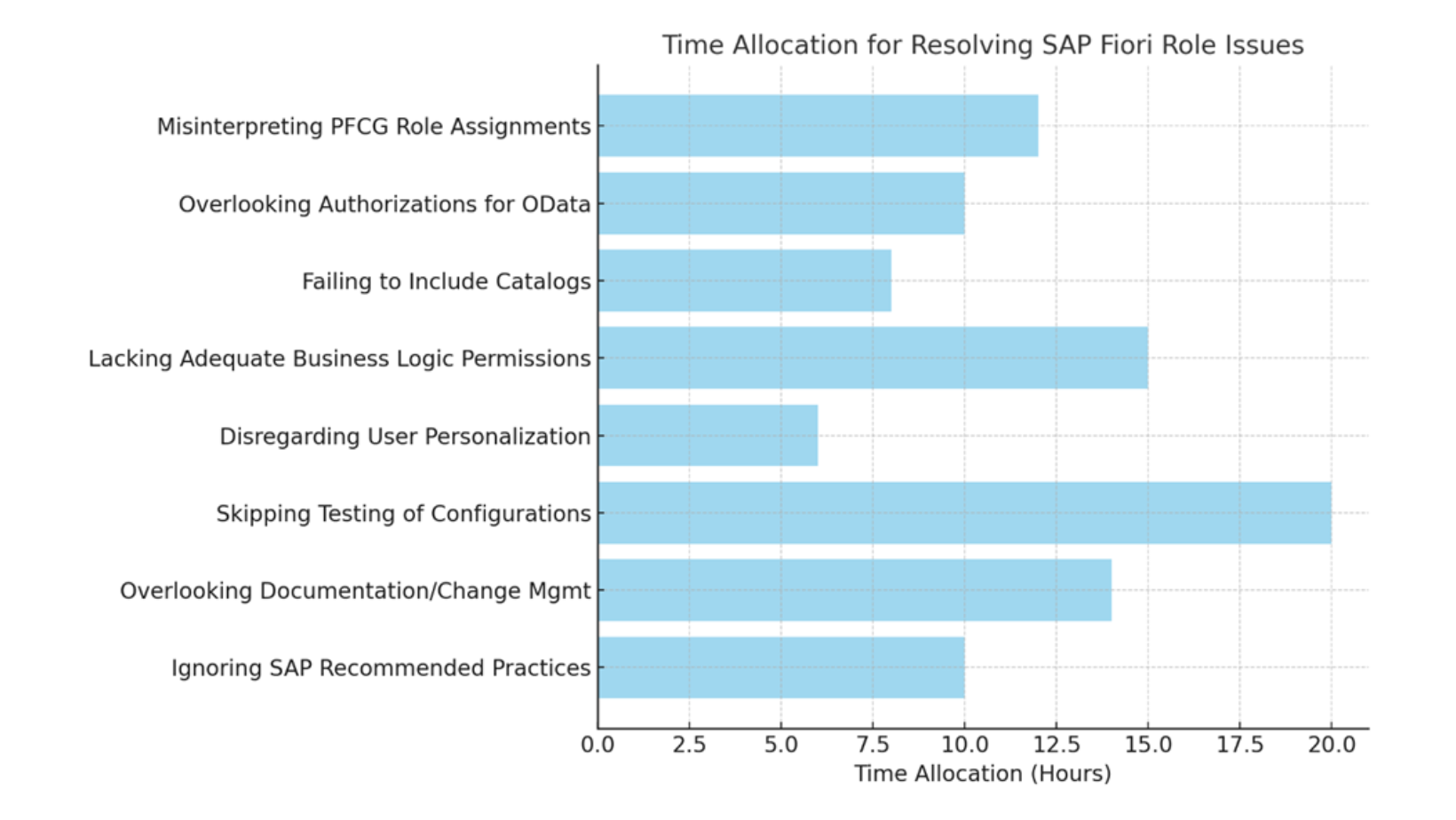
Misconfigurations often stem from a lack of alignment between roles and the necessary UI entities and business authorizations, leading to issues such as unauthorized access or insufficient functionality. Addressing these common pitfalls requires a detailed understanding of the SAP Fiori authorization model and a proactive approach to role management. Through careful planning and attention to detail, organizations can enhance their security posture and optimize user experience.
Misinterpreting PFCG Role Assignments
One frequent issue is the misinterpretation of PFCG role assignments. Often, roles are not configured correctly, leading to either excessive or insufficient access for users. Such misconfigurations can arise from not properly aligning roles with the required app-specific UI entities and business authorizations. The implications of incorrect role assignments are far-reaching; they can compromise security by allowing unauthorized access or hinder productivity by restricting necessary application functionality. [gr18]
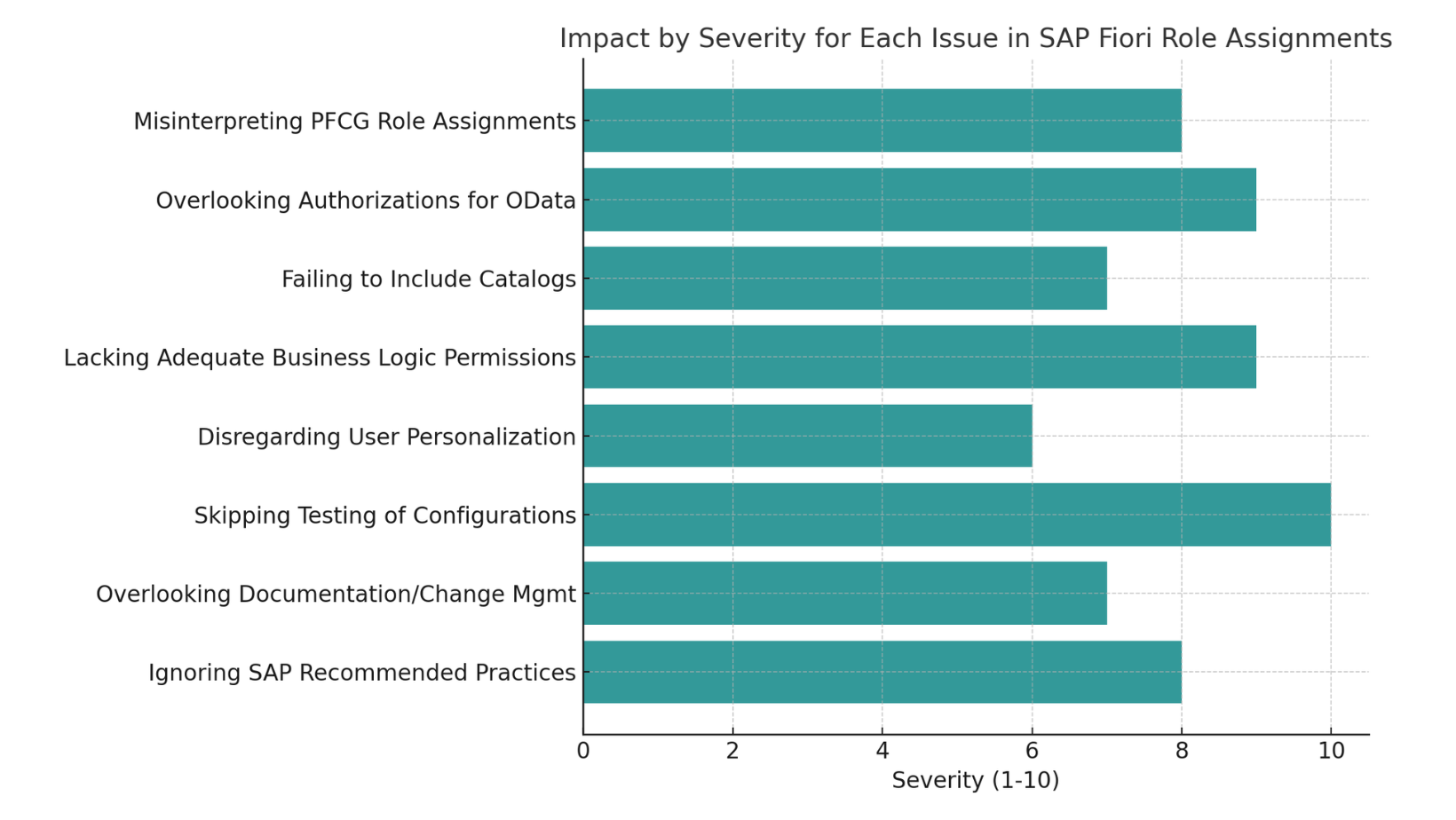
Ensuring accurate role configuration is essential for maintaining a secure and efficient operational environment.
Overlooking Authorizations for OData Services
Administrators often neglect the critical aspect of OData service authorizations when assigning roles in SAP Fiori. This can happen when they add catalogs to a PFCG role without fully understanding the dependencies that OData services have on application functionality. Without the necessary OData start authorization, users may encounter significant issues, such as being unable to launch applications or access essential business data. These disruptions highlight the importance of a thorough review and validation of OData authorizations during the role assignment process.
Failing to Include Catalogs
Another common error involves neglecting to include the appropriate catalogs in PFCG roles. Administrators may miss using the "Include Applications" option, resulting in gaps in app-specific authorizations. This oversight can prevent users from accessing all necessary functionalities within an application, directly impacting their ability to perform their roles effectively. For example, a user may find they can access an app but not execute specific actions within it, causing frustration and inefficiency. [gr19]
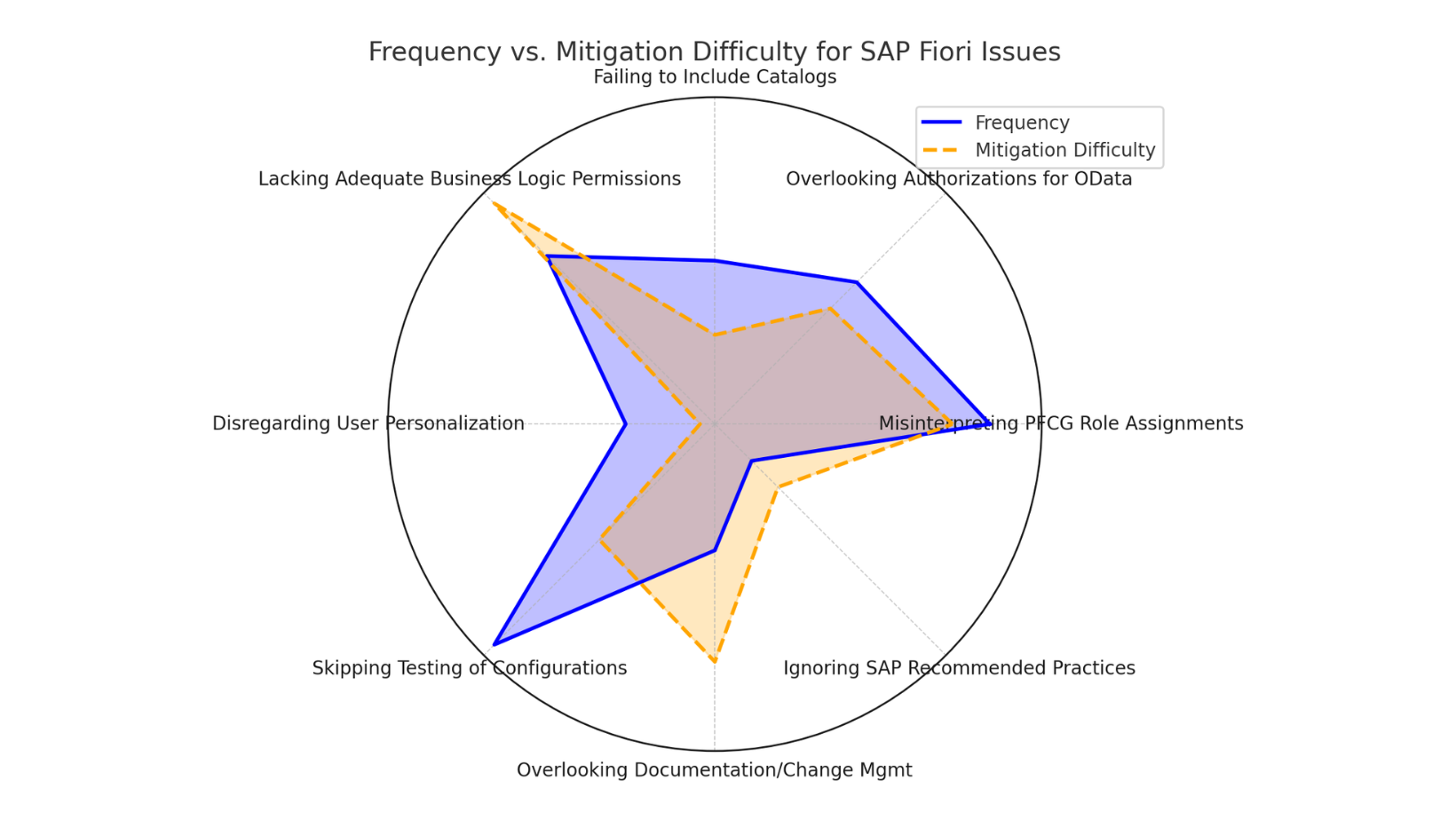
Properly configured catalogs ensure that users have the required access to perform their job functions, enhancing both productivity and security. Therefore, a detailed review of catalog settings is essential to avoid these pitfalls.
Lacking Adequate Business Logic Permissions
Business logic permissions are vital for executing various functions within SAP applications. A frequent mistake is not adequately mapping these permissions to PFCG roles, especially for business services and functions under the OData layer. [gr20]
Missing business logic authorizations can result in application errors, failed business processes, and even transaction rollbacks. These disruptions highlight the critical need for ensuring comprehensive business logic permissions in role assignments. When these permissions are not correctly configured, it can lead to significant operational issues, disrupting workflows and affecting overall productivity. Organizations must prioritize the correct mapping of business authorizations to prevent such failures, ensuring that users can perform their tasks without encountering unnecessary obstacles. This step is essential for maintaining the integrity and efficiency of business operations within SAP Fiori.
Disregarding User Personalization Options
User personalization is a crucial aspect often neglected when configuring SAP Fiori roles. While centralized configurations streamline system management, enabling end-users to tailor their experience can significantly enhance usability and productivity. Users who cannot adjust their interfaces to better fit their workflows and preferences may struggle with inefficiencies and decreased satisfaction. Allowing for personalization empowers users to create a more intuitive and efficient work environment. [gr21]
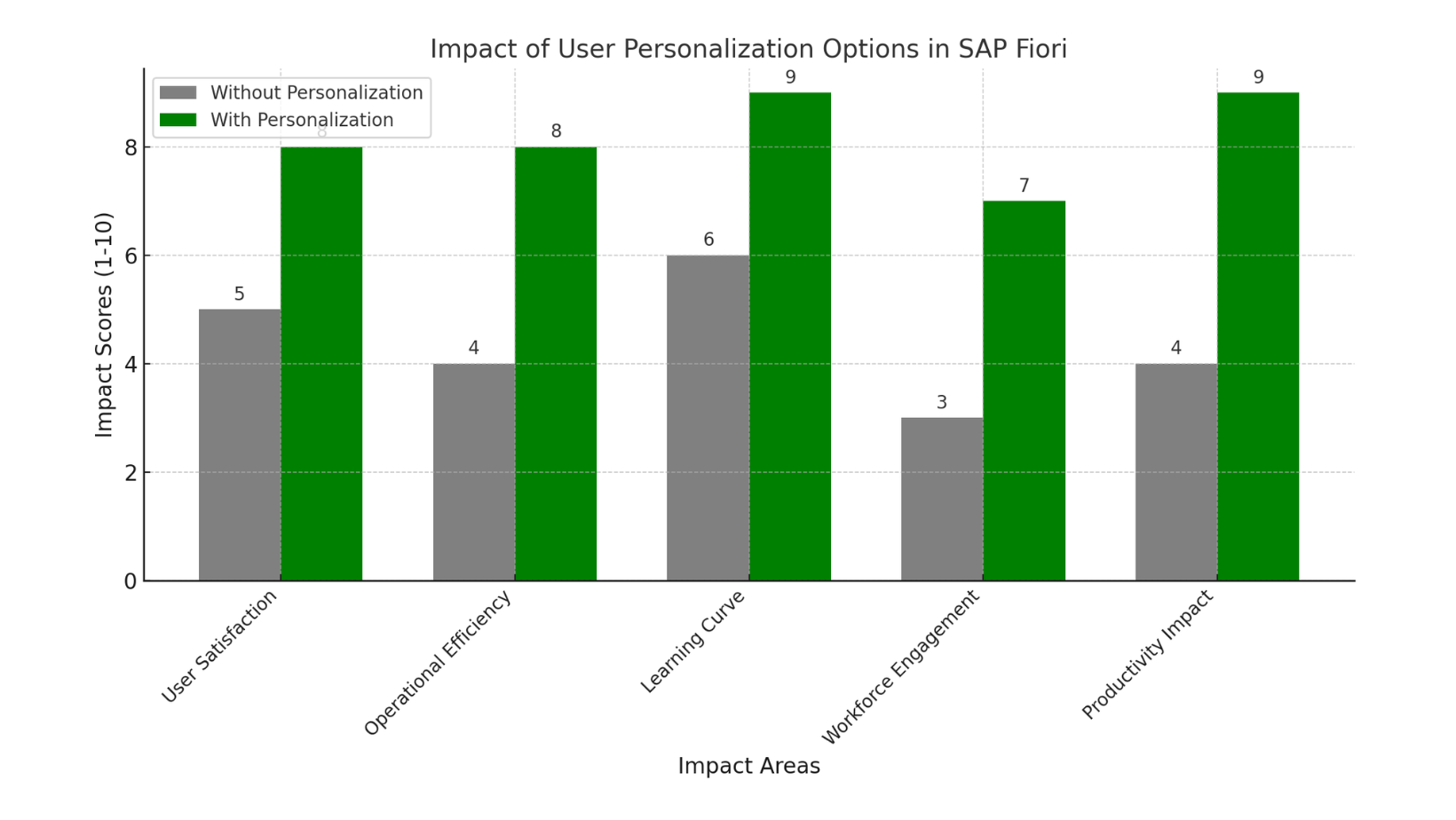
This capability can reduce the learning curve for new users and help experienced users perform their tasks more efficiently. By integrating personalization options into role configurations, organizations can improve overall engagement and ensure their workforce remains productive and satisfied. This approach not only boosts individual performance but also contributes to the broader success of business operations within the SAP Fiori ecosystem.
Skipping the Testing of Role Configurations
Overlooking the testing phase in role configuration can lead to significant issues post-deployment. Without thorough testing, you risk users encountering access problems or applications not functioning as expected. These issues can cause operational delays, frustrate users, and erode trust in the system's reliability. Effective testing protocols are essential for verifying that role assignments match organizational requirements and ensure seamless user experience. One common mistake is assuming that if a role is logically sound, it will function correctly in practice. However, the real-world environment often presents complexities that theoretical setups might not account for. Comprehensive testing helps identify and rectify these discrepancies before they impact end-users.
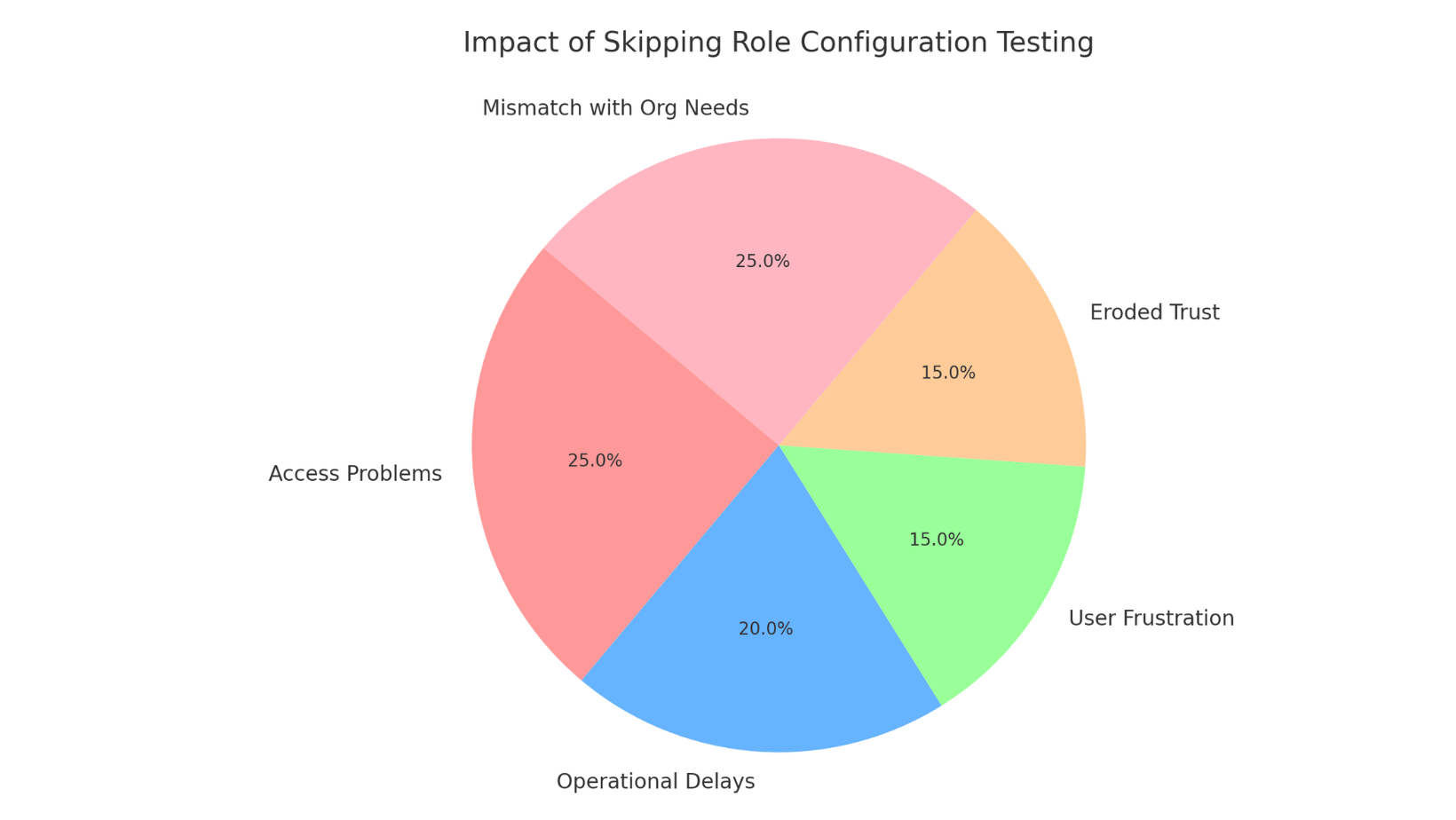
Testing should encompass various scenarios, including edge cases and typical user workflows, to ensure robust role performance. Automated testing tools can be beneficial, but manual testing by actual users provides invaluable insights into potential issues. Engaging with a diverse group of users during the testing phase can uncover specific needs and challenges that automated systems might overlook.
In addition to initial testing, ongoing validation is crucial as business requirements evolve and applications are updated. Regular reviews and adjustments based on user feedback ensure that role configurations remain aligned with current operational needs, maintaining system integrity and user satisfaction. Through diligent testing practices, organizations can prevent disruptions and foster a more reliable and secure SAP Fiori environment.
Overlooking Role Documentation and Change Management
Proper documentation and change management for role configurations are often overlooked, leading to numerous challenges in maintaining consistent user permissions. Without clear, thorough documentation, organizations struggle during audits, as tracing back specific role assignments and modifications becomes complex. This lack of transparency can result in compliance issues and make it difficult to ensure that permissions align with current security policies and operational needs. Change management processes are equally critical. As business requirements evolve and systems are updated, roles must be adjusted accordingly. Without a structured change management strategy, these modifications can be implemented haphazardly, increasing the risk of errors and inconsistencies in user access. Effective change management ensures that all modifications are tracked, reviewed, and approved before implementation, minimizing the risk of unintended consequences.
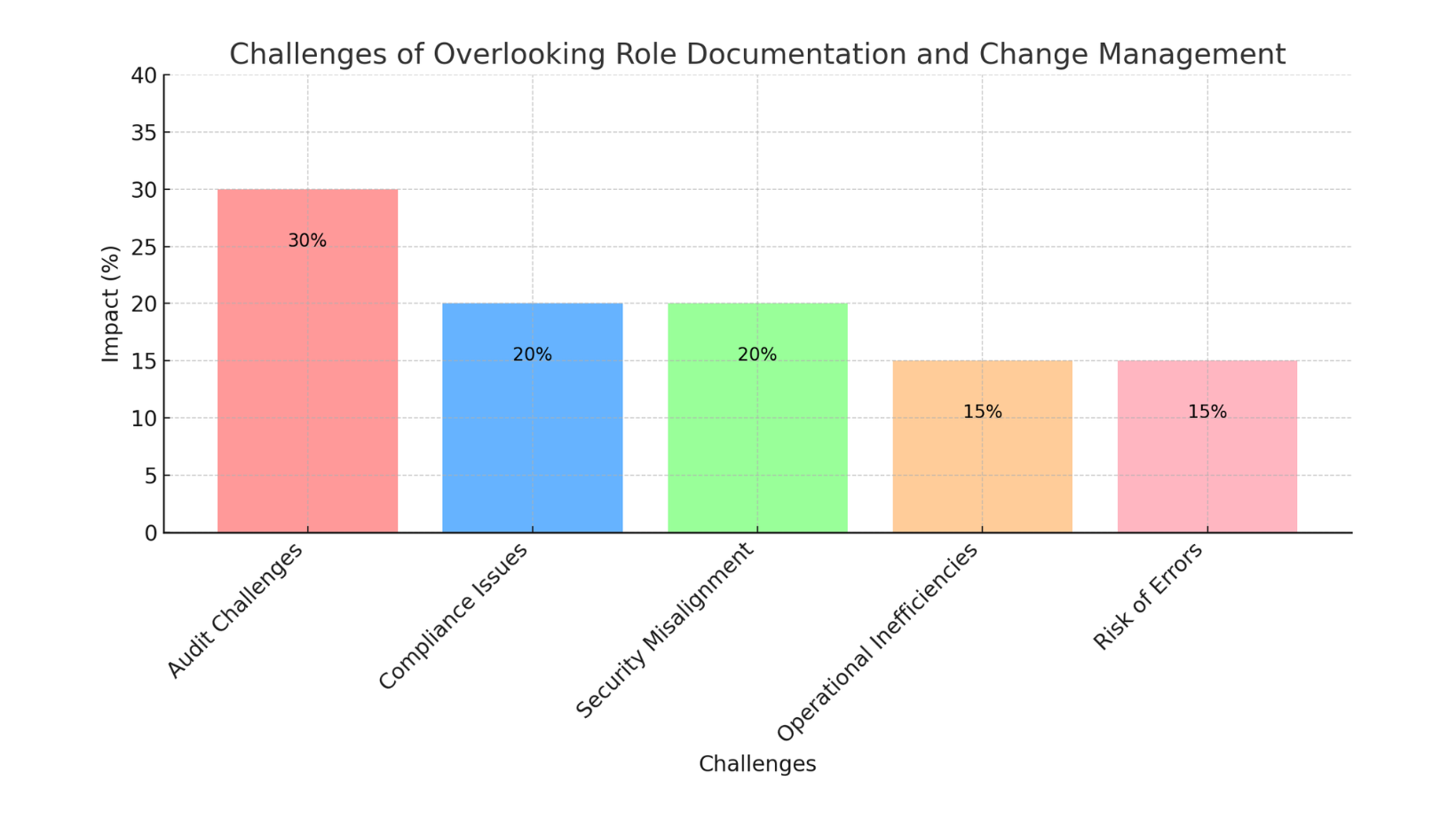
To avoid these pitfalls, organizations should establish comprehensive documentation protocols and robust change management practices. Every role configuration and modification should be meticulously recorded, creating a clear trail that can be easily followed during reviews and audits. Additionally, implementing a change management framework that includes detailed workflows for reviewing, testing, and approving changes will help maintain consistency and security in role assignments. This approach not only streamlines the process but also enhances accountability and ensures that user permissions remain aligned with organizational objectives.
Not Following SAP's Recommended Practices
Neglecting the guidance found in the SAP NetWeaver ABAP Platform Security Guide can expose your organization to significant risks. These recommendations are designed to enhance the security and efficiency of your SAP Fiori environment. When organizations disregard these best practices, they often find themselves vulnerable to security breaches and operational inefficiencies. Neglecting the guidance found in the SAP NetWeaver ABAP Platform Security Guide can expose your organization to significant risks. These recommendations are designed to enhance the security and efficiency of your SAP Fiori environment. When organizations disregard these best practices, they often find themselves vulnerable to security breaches and operational inefficiencies. The guide covers essential areas such as role management, authorization checks, and system monitoring, which are crucial for maintaining a robust security posture. Adhering to these recommendations helps ensure that your system is not only secure but also optimized for performance. It provides a structured approach to managing roles and authorizations, reducing the likelihood of errors and inconsistencies. Keeping up-to-date with SAP's best practices also means you are leveraging the most current security measures, further protecting your organization from potential threats. By integrating these guidelines into your daily operations, you can significantly enhance both the security and efficiency of your SAP Fiori system. Ignoring them, on the other hand, leaves you open to avoidable risks that can compromise your entire operation.
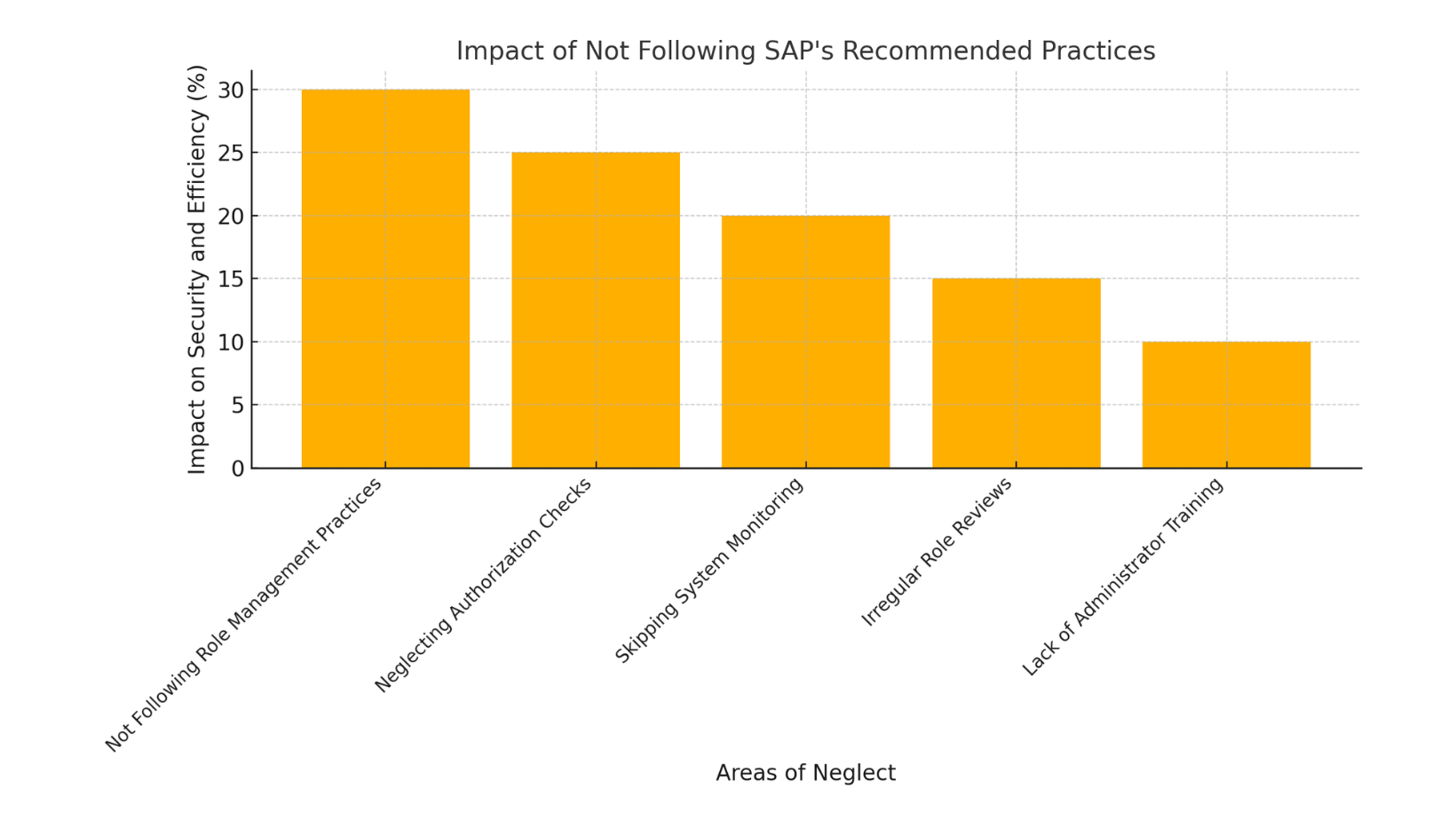
Recognizing and rectifying common mistakes in SAP Fiori role assignments is paramount for safeguarding both security and productivity within your organization. Missteps in role configuration can lead to unauthorized access, disruptions in business operations, and diminished user satisfaction. By systematically addressing these issues, you can significantly improve the efficiency and reliability of your SAP environment. Establishing diligent processes for role assignment is essential. This includes thorough testing of configurations, meticulous documentation, and adherence to SAP's recommended practices outlined in the SAP NetWeaver ABAP Platform Security Guide. These steps not only help in maintaining compliance but also in ensuring that role assignments are aligned with the evolving needs of your business. Regular reviews and updates of roles are critical as business requirements change and new functionalities are introduced. Additionally, continuous training for administrators can enhance their understanding of the SAP Fiori authorization model, enabling them to manage user access more effectively. By prioritizing these practices, you can create a more secure, efficient, and user-friendly SAP Fiori environment. This proactive approach not only mitigates potential risks but also contributes to smoother business operations and improved user engagement. Ultimately, a well-managed role assignment process is a cornerstone of a robust SAP system, fostering a secure and productive work environment.



